Hello
A warm welcome awaits the kids as they arrive.
They kick off their shoes, stow their bags in their cubbies and wash their hands.
Ages 3 to 5
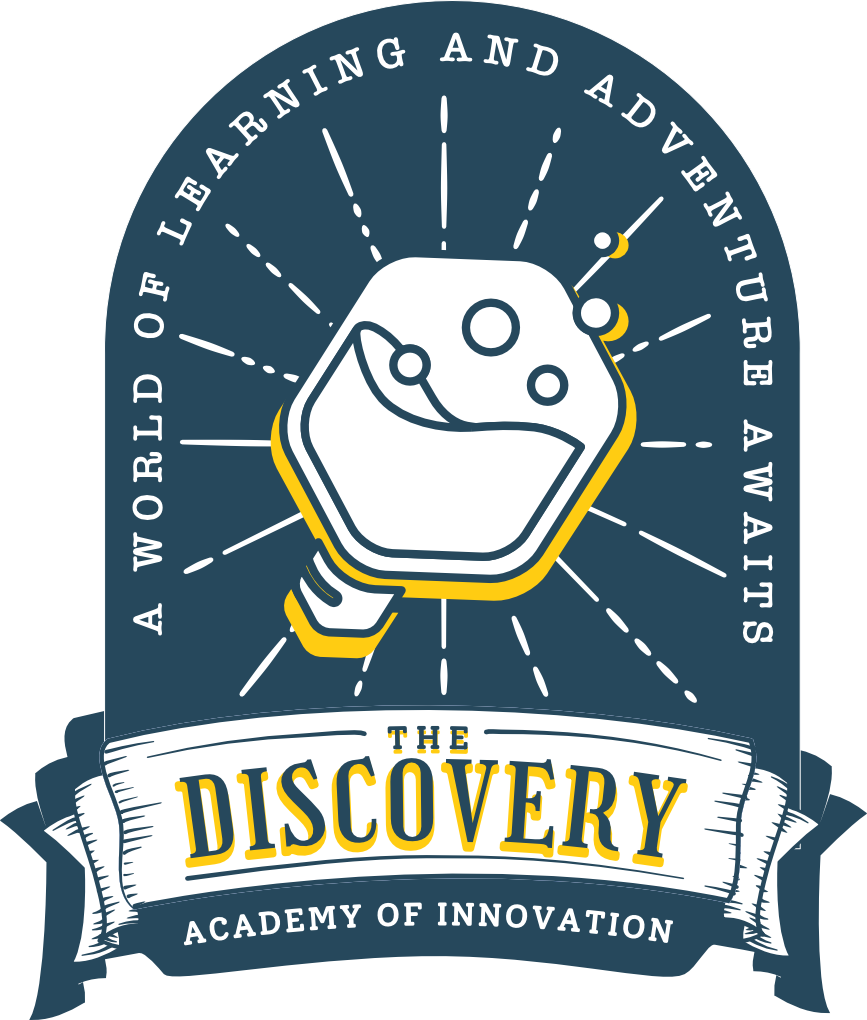
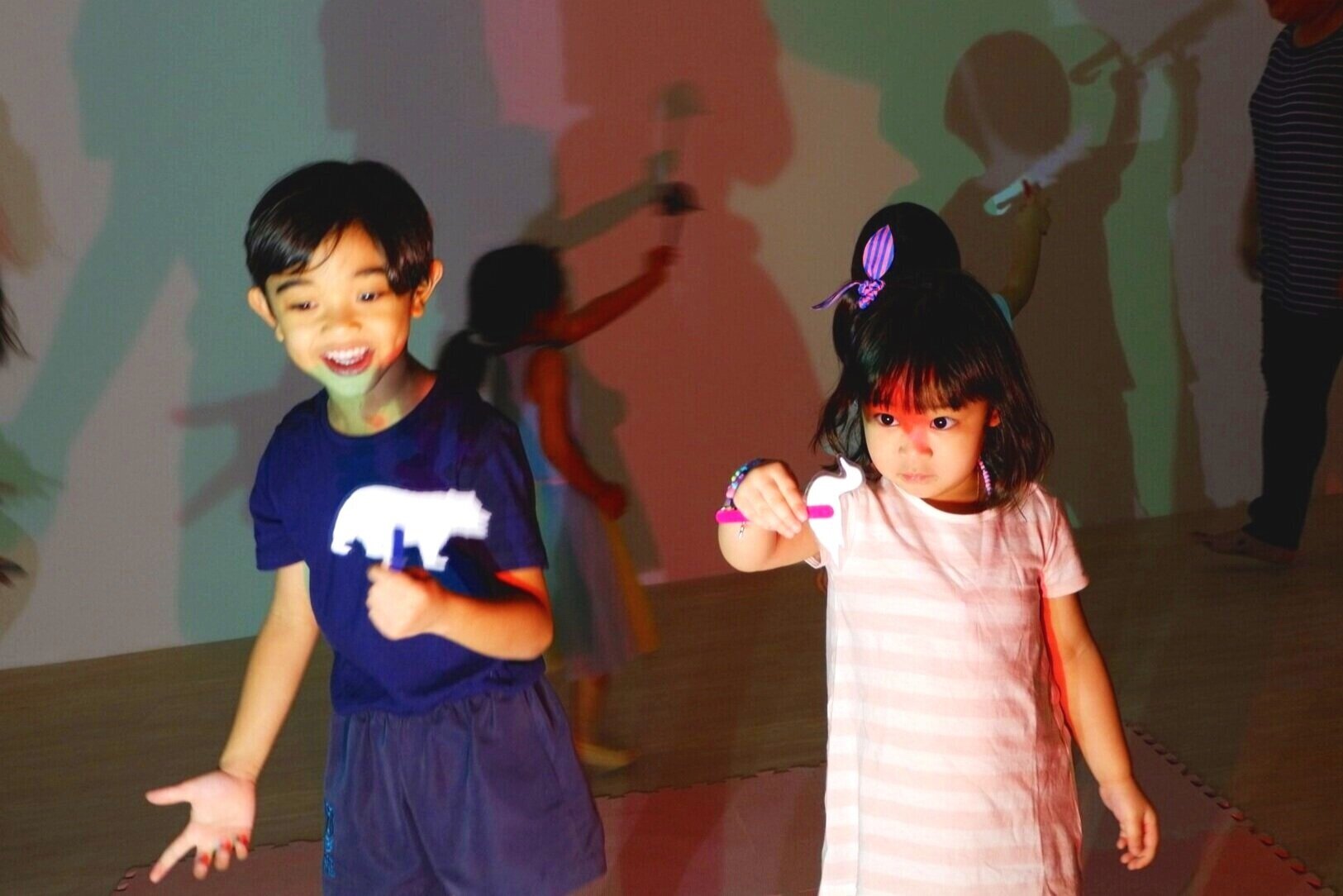

A Nurturing Environment
A nurturing environment allows children to develop meaningful relationships with their teachers, peers and other members of the school community. This helps kids grow kind, develop empathy and engage more deeply in the learning experience.

Global Citizenship Education
Learning activities centered on one’s self, one’s family, one’s community, one’s country and one’s world help children gain a deeper awareness of themselves and others. Children come to value and celebrate diversity, respect different points of view, collaborate, build friendships and act with respect, kindness and compassion towards others.

Play-based Learning
Play-based, interest-driven and inquiry-led education foster curiosity and a love of learning, which are key in raising lifelong learners.

Children as Innovators
A focus on designing, building and inventing empowers young children as innovators, helping them understand that their ideas are valued and can be realized with time, effort and perseverance. Moreover, children come to understand that their ideas and creations have the power to make a difference in the world.

Purposeful Use of Technology
The purposeful use of technology and everyday materials stimulate the mind, engage the senses and provide opportunities for children to tinker, experiment and invent. In this manner, children develop a nuanced understanding of the possibilities of materials, the affordances of technology and their role as creators.
A warm welcome awaits the kids as they arrive.
They kick off their shoes, stow their bags in their cubbies and wash their hands.
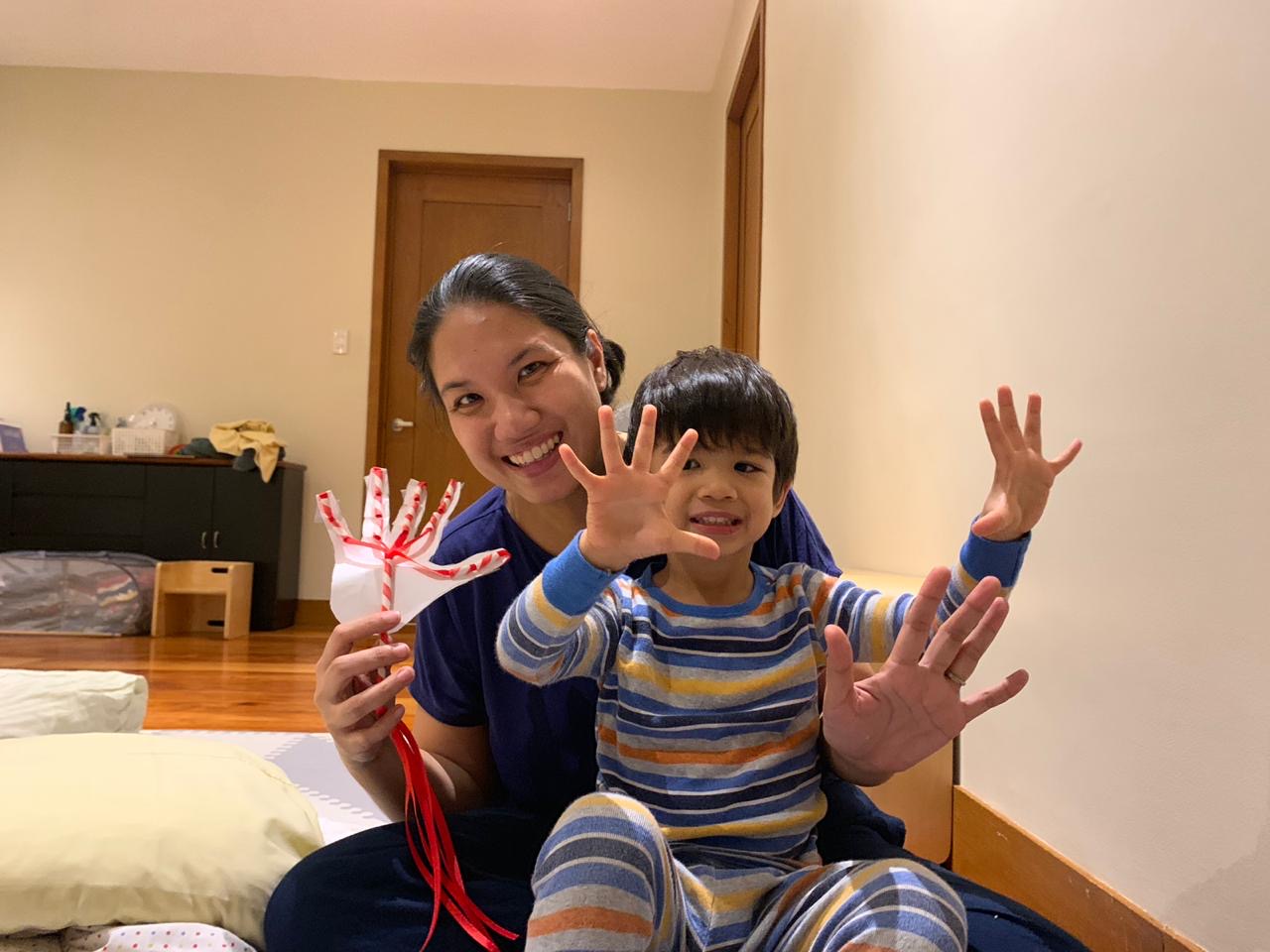
Kids and teachers gather around, sing songs, play games, learn about the weather and the day of the week and engage in show and tell. During this time, teachers, puppets and even animated characters present kids with the unit of inquiry for the week.
Core practices: Speaking up and sharing ideas, listening, thinking, concentrating, taking turns, collaborating, and most of all, getting excited about what lies ahead in the day and week to come!
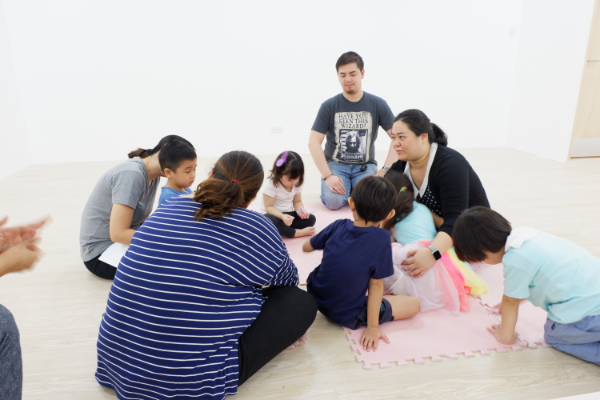
At the Discovery Academy of Innovation, we believe that play is serious business. Playground time provides kids with a safe space where they can run, jump and move about — taking calculated risks as they push the limits of their physical abilities. Playground time is also a space where kids can come together, play, make up games, define rules, negotiate different points of view and learn to settle conflict.
Core practices: Running, jumping, sliding, crawling, dancing, moving, wiggling about; designing play, taking risks, building friendships, collaborating, resolving conflict, finding consensus.
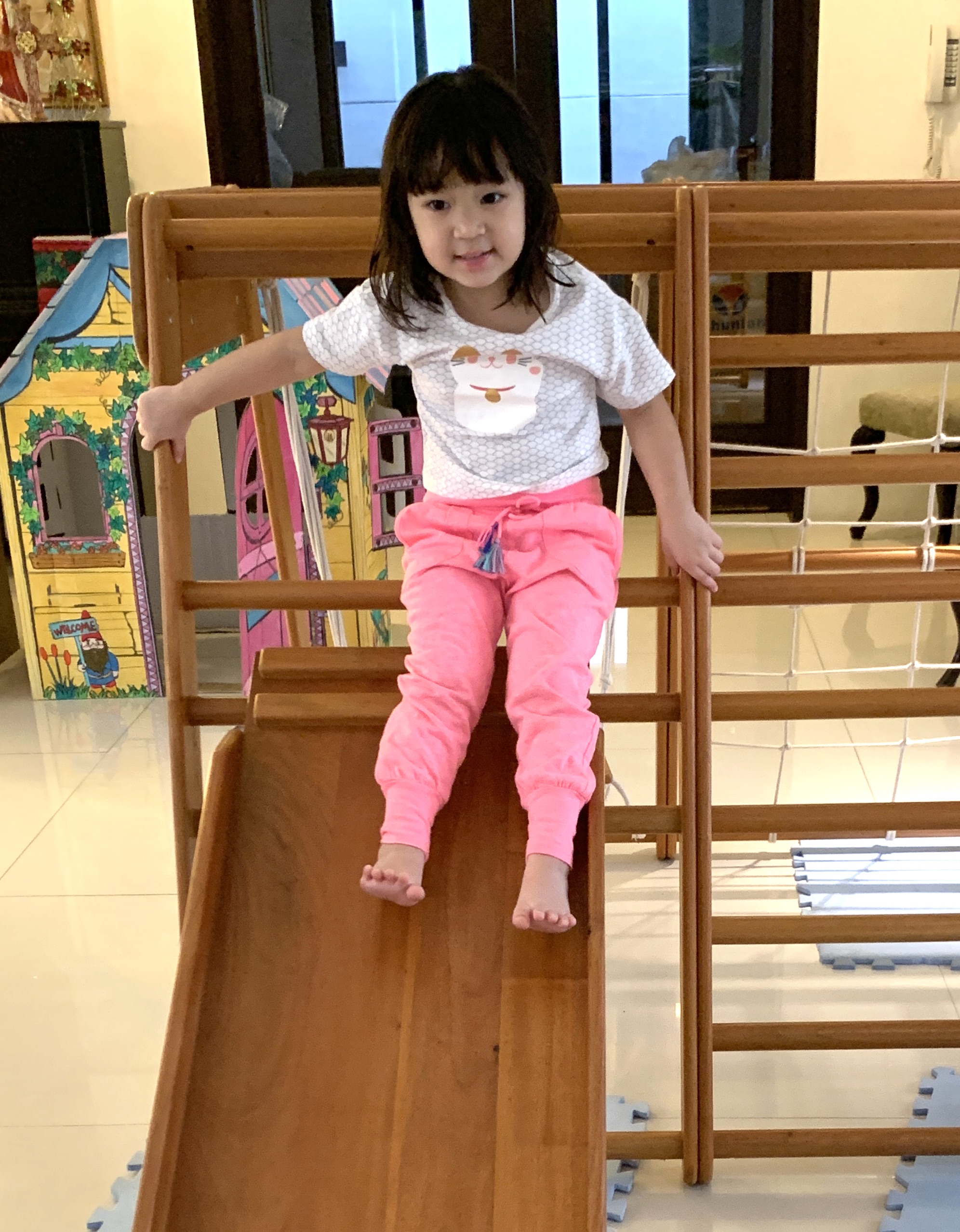
Kids engage in self-directed and minimally guided play at their centers of choice.
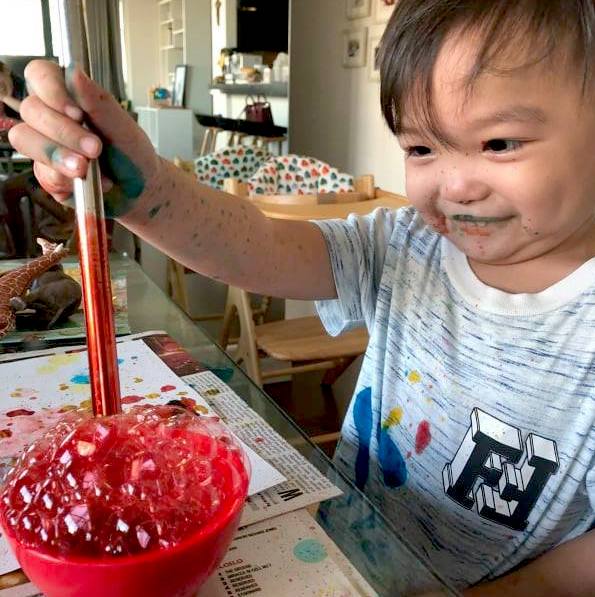
Sensory play activities delight and stimulate the senses. From light boxes that allow children to play with colors, patterns and shadows to bins where children explore a variety of textures such as slime, water and sand, the sensory play station helps kids understand that using their senses helps them discover the world around them.
Core practices: Seeing, feeling, hearing, tasting, smelling, exploring, discovering, experiencing, playing
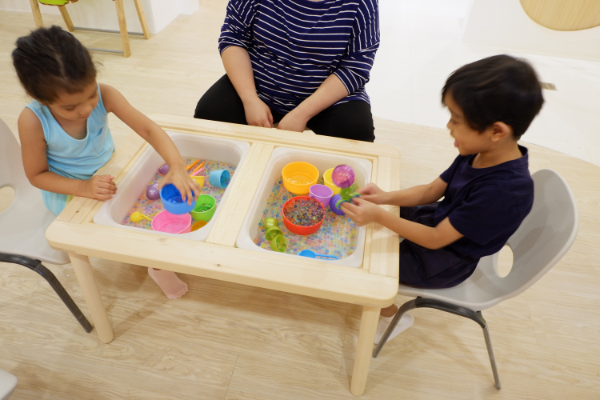
Pretend play occurs in all classroom spaces. Children may rush to Huddle Up! as chickens with flapping arms and clucking sounds. They may assume the roles of cops and robbers in the playground or take on the role of an archeologist while digging for fossils in the sand. That said, one classroom area is specifically dedicated to dramatic play – where children can tell stories, stage plays, host puppet shows, dance, play musical instruments and even create their own films.
Core practices: Storytelling, imagining, pretending, moving, dancing, singing, performing, improvising, creating.
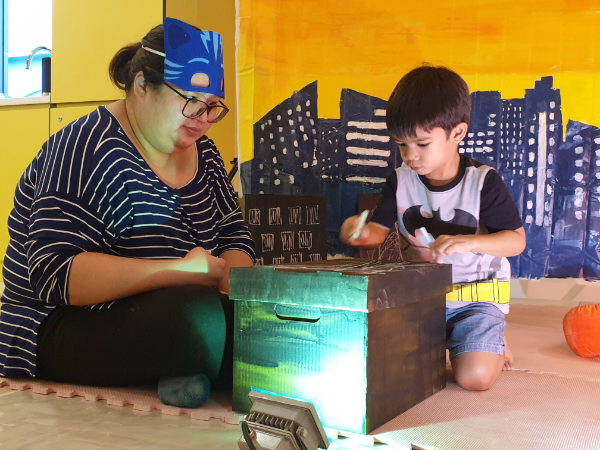
The art center is a place where children can explore a variety of materials from crayons, finger paints, clay, cardboard and textiles to LED’s, conductive tape, speakers and micro controllers. Children create projects both big and small, individually and collaboratively.
Core practices: Drawing, coloring, painting, cutting, pasting, exploring materials, imagining possibility, tinkering, building, creating, sharing

The Math center lays the foundations for mathematical thinking as kids explore and play with a variety of toys, manipulatives, puzzles and games. As kids level up on their math skills, they will engage in progressively difficult skill building missions and design challenges in the field of STEM.
Core practices: Playing; sorting; counting; measuring; exploring, manipulating and representing math concepts such as patterns, shapes and data; imagining, building, creative problem solving.
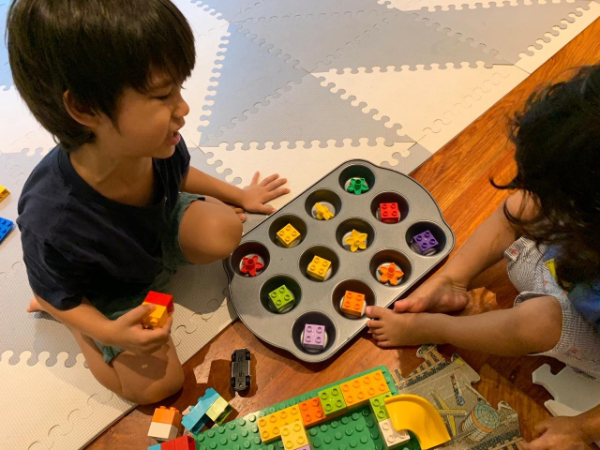
The Science center is a place of discovery. Various exhibits pique children’s curiosity and inspire them to understand phenomena and discover the way things work. At the science center, children create terraria, learn about animals, care for classroom pets, play with prisms and develop a sense of awe at the world around them. As kids level up on their science skills, they will engage in progressively difficult skill building missions and design challenges in the field of STEM.
Core practices: Storytelling, imagining, pretending, moving, dancing, singing, performing, improvising, creating.

The media center is a place where kids engage with digital media and technology in meaningful ways. At times, kids watch an animation where an animated character introduces the topic of the week (People in my neighborhood) or the letter of the day (D is for Dragons). Kids may learn the basics of coding as they help mischievous little robots complete tasks. Other times, they may play digital games that develop their literacy, numeracy, fine-motor and spatial skills. At the media center, children are encouraged to collaborate and listen to one another. The media center also acts as the place where kids get to see their digital creations come to life.
Core practices:
Playing, designing, reflecting, iterating, reading and writing across a variety of media

While each center houses books that correspond to a particular domain of knowledge, the main library houses the majority of books for Pre-K and K. The story center is a space where kids can seek quiet time or curl up in cozy little nooks where they can read, imagine, daydream and play.
Core practices:
Reading, sequencing, inferring, understanding different points of view, empathizing, imagining, storytelling

Tinker Studio is more structured class time that reinforces learning from station by station play. Tinker Studio consists of learning experiences and design challenges organized around a particular unit of inquiry. They are progressively difficult and allow for deeper learning, enhanced skill-building and content mastery in the areas of science, mathematics, engineering, technology, communication, language and literacy, the arts, health, physical education and wellness.
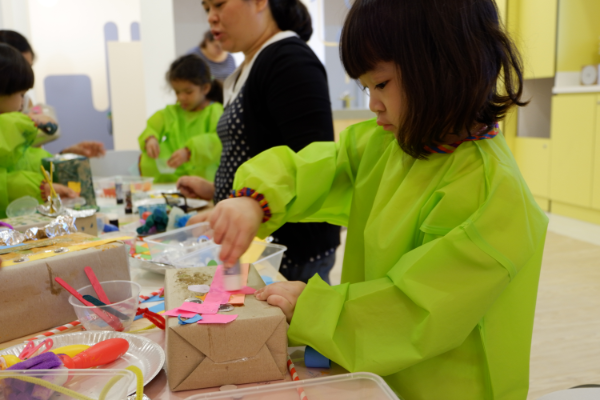
| Time | Class |
|---|---|
| 8:15-8:30 | Hello! |
| 8:30-9:10 | Exploration Stations |
| 9:10-9:20 | Huddle Up! |
| 9:20-10:00 | Playground Time! |
| 10:00-10:20 | Snack Time! |
| 10:20-11:20 | Tinker Studio |
| 11:20-11:30 | Good Bye |
| Time | Class |
|---|---|
| 8:00-8:10 | Hello! |
| 8:10-9:10 | Exploration Stations |
| 9:10-9:30 | Snack Time |
| 9:30-9:40 | Huddle Up! |
| 9:40-11:00 | Tinker Studio |
| 11:00-11:40 | Playground Time! |
| 11:40-12:00 | Good Bye |